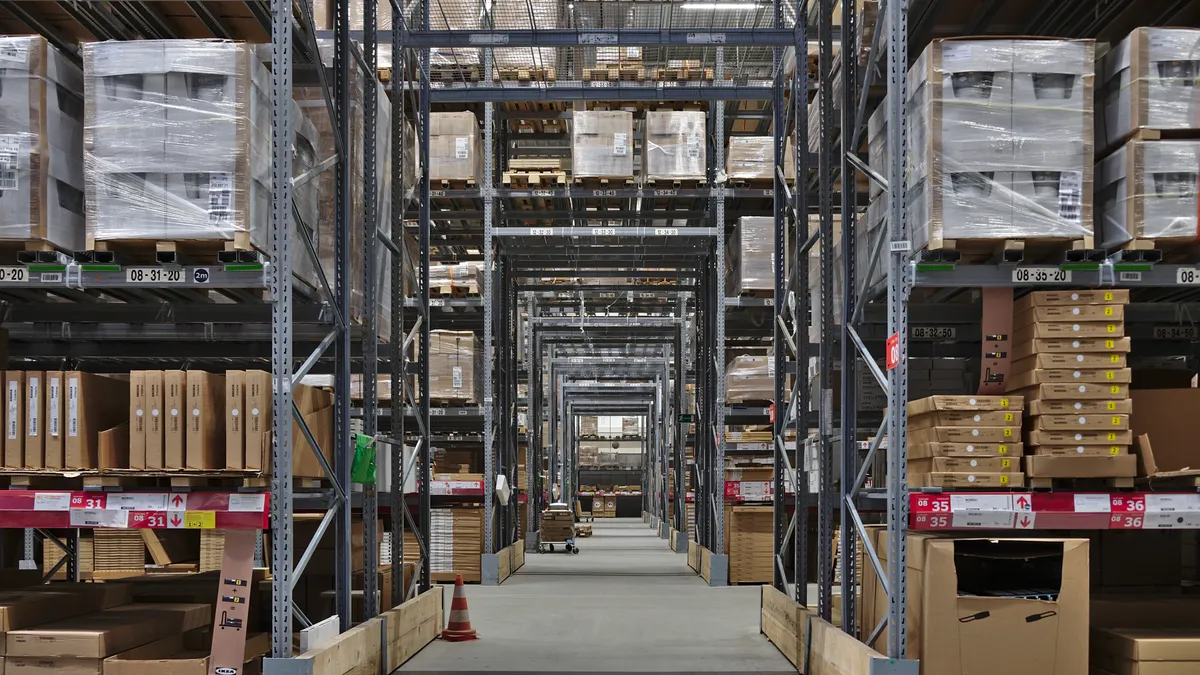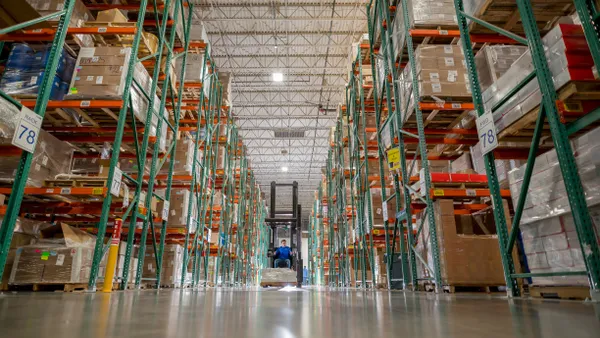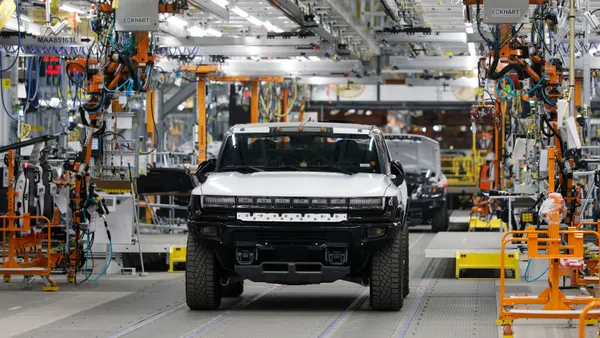Dive Brief:
- Supply chain professionals are divided on lean supply chains, according to the 2021 Third-Party Logistics Study published Wednesday by the Council of Supply Chain Management Professionals, Infosys Consulting, Penn State University and Penske Logistics. It found that 42% of respondents agree that supply chains were too lean based on their experience during the pandemic, but 49% disagreed.
- The report defines "lean" as cutting out as much waste as possible while ensuring there is enough to run under a "best-case scenario." It is usually associated with inventory reduction and other cost-cutting measures. Industry has moved toward more lean supply chains over the last 25 years, but the pandemic highlighted how this model can struggle when the economy experiences dramatic demand swings, the report said.
- "For those who are not as familiar with how supply chains operate, keeping limited raw materials on hand and operating in a just-in-time mode affects a manufacturer’s ability to respond within a short window," Sylvie Thompson, former supply chain practice leader at Infosys and a researcher on the study, said in the report. "Not having enough supplies prevents companies from producing more, which became a challenge during the pandemic when demand for items such as toilet paper, face masks and sanitizing wipes spiked."

Dive Insight:
There are obvious benefits and disadvantages of lean supply chains that have been outlined in academic research, according to Andrew Manikas, an associate professor of management at the University of Louisville who has conducted lean operations research. But by looking at how the pandemic unfolded in the local grocery store, it's easy to see the argument in favor of "too lean."
"When you went to Kroger and they're out of bleach and hand sanitizer, those were obviously too lean, right?" Manikas said. "The whole point of inventory is a buffer against demand shocks. So, clearly, they failed there."
In 2015, Manikas worked on a paper that looked at data from 3,857 publicly traded manufacturing firms in 19 industries between 1991 and 2013 to study the impact of slack (resources in excess of what is required to fulfill expected demand) in a company's operation.
"We showed in research that the return on assets ... was better for firms that had some slack in there," he said.
It's easy to understand why companies adopt lean practices, though. Lean operations mean the company is working to keep costs down, which appeases shareholders and analysts.
"It makes your shareholders happy that [you don't] have a bunch of inventory tied up in warehouses all across North America, etc., because that's money [you would be] wasting on holding costs, obsolescence and you're paying rent on the building," Manikas said. "So in good times, when things are stable, lean is great."
If a demand shock occurs and suddenly it becomes apparent that an item doesn't have enough stock to meet demand, there are measures a company can take, such as moving the item to a faster form of transport. For an item moving across the Pacific, this means switching from a boat to a plane, if possible. Logistics companies shared details for shippers to transport hand sanitizer by plane in the early days of the pandemic.
When toilet paper and hand sanitizer ran out, it meant manufacturers and retailers were missing sales, which is one problem with a lean supply chain.
"Lean is a low-cost solution," Manikas said. "But you can go so low that you can't sell."
This is why some producers, such as Pepsi, are willing to keep more slack in their inventory, Manikas said, who consulted with Pepsi in a previous job.
"They're willing to ... just have way more and have that cost borne because if you ever go [to the store], and there's not our product on a shelf, God forbid, you might try Coca Cola," he said.
Pepsi pumps out more product to ensure it doesn't lose sales and risk a potential lifelong customer who decides Coke is better when Pepsi is out of stock, he said.
But if a company wants to maintain the principals of lean while still being prepared for a rare uptick in demand, there are options. One strategy would be to have contacts in place for additional manufacturing capacity closer to the final user that aren't executed until they're needed. The agreement would be a higher cost for production, but it would be there if the company needed it, Manikas said.
"When the pandemic came, you can engage that contract," he said. "And you're going to pay more to make the item, but you'll have it in a week versus 30 days or 40 days. And you know, frankly, you could probably charge more for it, right? Because you'll be the only one that has it on the shelves."
Another option is vendor-managed inventory, which requires the supplier to manage its inventory. This keeps inventory off the books until its sold, while maintaining a close relationship with a vendor that can help a company respond to demand swings, Manikas said. This is a step that American Eagle announced it was taking recently when it decided to stage materials with manufacturing partners ahead of peak season. This tends to be a strategy used by larger companies.
Technology could also play a role. The pandemic has shown the importance of supply chain visibility and real-time data, the 3PL report said. Without visibility, the bullwhip effect becomes a concern. Suppliers can see point of sale data — not just the orders from their immediate customer — then it can prevent issues and help respond to demand, Manikas said.
It also depends on the product being carried. White T-shirts don't change much from year to year, so a company can carry a lot of stock and will likely sell it eventually. But more seasonal or trendy items might be candidates for more lean practices.
"So, there isn't a single right answer," Manikas said. "You don't want to be at either extreme: super lean or super fat. And a lot of it is related to the profitability of your product."
This story was first published in our weekly newsletter, Supply Chain Dive: Operations. Sign up here.














